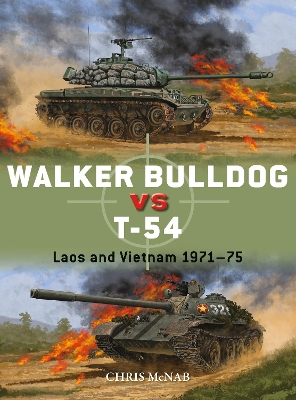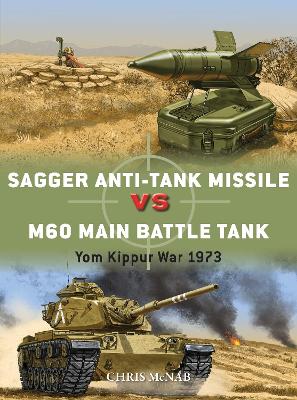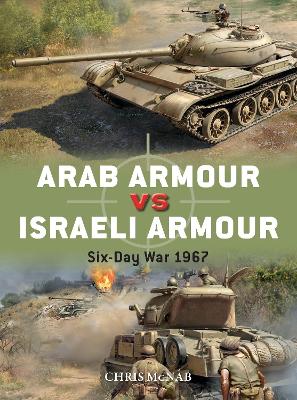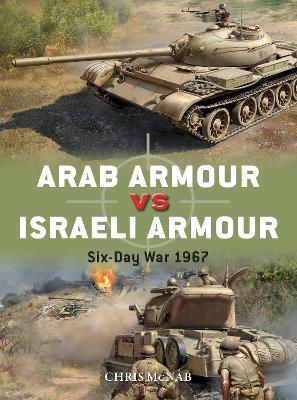Duel
1 primary work • 4 total works
Book 94
During the Vietnam War, both the United States and the Soviet Union supplied all manner of weapon systems to the opposing sides, including tanks and armoured vehicles. Two tanks in particular took momentary prominence in the later years of the conflict. On the South Vietnamese side, it was the US M41 Walker Bulldog; for the communist North Vietnamese, the Soviet-supplied T-54 main battle tank was the core of their armoured power.
In their first major engagement, during Operation Lam Son 719 (February-March 1971), it was the Walker Bulldog in the ascendant, but in later battles the T-54s inflicted heavy losses on their lighter opponents, taking the advantage through their superior manoeuvrability and gunnery.
Illustrated with full-colour artwork as well as rare and revealing photographs from both sides, this book studies these two iconic tanks in Vietnamese service, examining how their differing designs and fighting doctrines affected their performance in this unique theatre of combat.
In their first major engagement, during Operation Lam Son 719 (February-March 1971), it was the Walker Bulldog in the ascendant, but in later battles the T-54s inflicted heavy losses on their lighter opponents, taking the advantage through their superior manoeuvrability and gunnery.
Illustrated with full-colour artwork as well as rare and revealing photographs from both sides, this book studies these two iconic tanks in Vietnamese service, examining how their differing designs and fighting doctrines affected their performance in this unique theatre of combat.
The 1973 Yom Kippur War rewrote the textbook on the tactics of modern armored warfare. Unlike the previous major Arab-Israeli war of 1967, the Israeli Defense Forces (IDF) faced an enemy that had invested heavily in modern Soviet weapon systems and tactics.
Using detailed colour artwork and insightful analysis, this book explains how the effective use of the Soviet-supplied AT-3 Sagger (9M14 Malyutka) anti-tank missile allowed small Arab tank-killing teams to destroy Israeli armor at an astonishing rate. It also analyses the tank that opposed it, the US-built M60A1, which had to fight for survival against the Arab Saggers, and shows how in both the Sinai and the Golan Heights, the IDF quickly learned that firepower and infantry/artillery cooperation were the keys to their survival.
Using detailed colour artwork and insightful analysis, this book explains how the effective use of the Soviet-supplied AT-3 Sagger (9M14 Malyutka) anti-tank missile allowed small Arab tank-killing teams to destroy Israeli armor at an astonishing rate. It also analyses the tank that opposed it, the US-built M60A1, which had to fight for survival against the Arab Saggers, and shows how in both the Sinai and the Golan Heights, the IDF quickly learned that firepower and infantry/artillery cooperation were the keys to their survival.
The Six-Day War in 1967 was a lightning Israeli campaign that changed the face of the Middle East. Israel's armoured brigades, despite being heavily outnumbered on paper by Arab AFVs, managed to dominate the Arab forces tactically and technologically, through excellent gunnery and decentralized battlefield leadership. The fighting took place on three different fronts: the Sinai Front, the Jordanian Front and the Golan Heights. Each presented its own unique set of tactical and terrain challenges, from the long-range battles between massed Egyptian and Israeli armour in the scorching flatlands of the Sinai Desert, to relatively close-quarters engagements across steep and narrow terrain in the Golan Heights.
Not only did the Six-Day War see the direct clash of opposing Cold War tactical approaches, but also the direct confrontation of Western and Soviet MBTs. On the Israeli side, the IDF had the British Centurion, the American M48 Patton, the M51 Super Sherman, and the French AMX-13, although they focused their armoured spearheads on the Centurions and Pattons. The Arabs' armoured power was expressed through T-34/85s, T-54/55s, PT-76s and JS-3s (IS-3s). Each vehicle brought its own set of advantages and disadvantages, although ultimately it was the long-range tank-killing gunnery of the Centurion that often took the day.
Drawing on compelling first-hand accounts from both unit commanders and individual crews, this Duel title explains the tactical and mechanical dynamics of one of history's greatest post-war armoured engagements.
Not only did the Six-Day War see the direct clash of opposing Cold War tactical approaches, but also the direct confrontation of Western and Soviet MBTs. On the Israeli side, the IDF had the British Centurion, the American M48 Patton, the M51 Super Sherman, and the French AMX-13, although they focused their armoured spearheads on the Centurions and Pattons. The Arabs' armoured power was expressed through T-34/85s, T-54/55s, PT-76s and JS-3s (IS-3s). Each vehicle brought its own set of advantages and disadvantages, although ultimately it was the long-range tank-killing gunnery of the Centurion that often took the day.
Drawing on compelling first-hand accounts from both unit commanders and individual crews, this Duel title explains the tactical and mechanical dynamics of one of history's greatest post-war armoured engagements.



